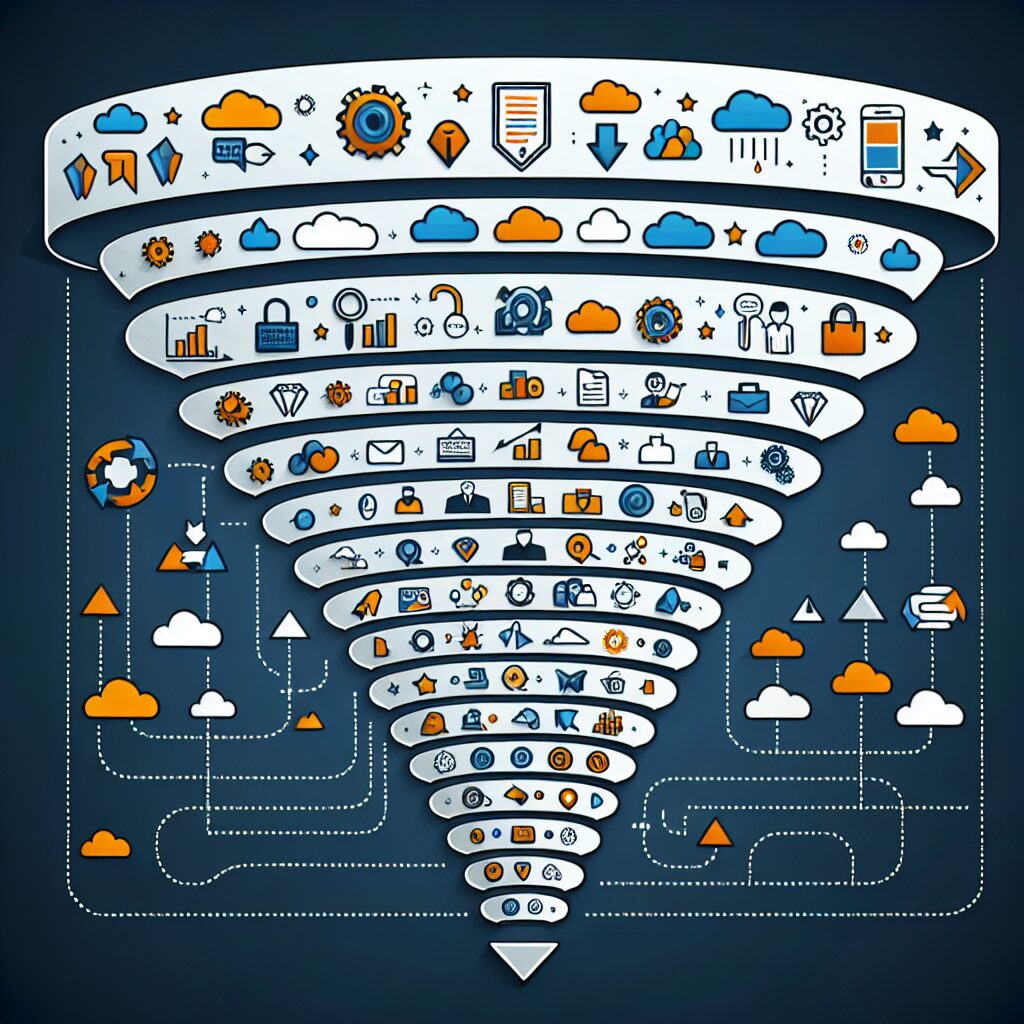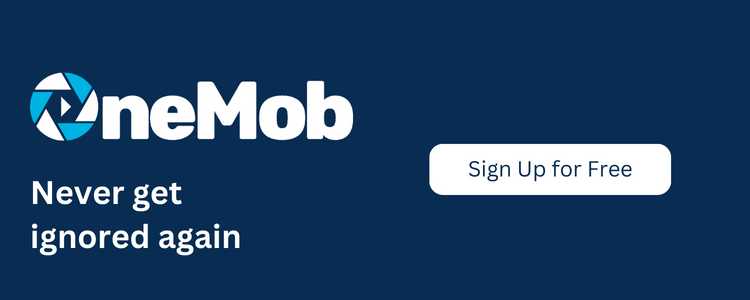Mastering the Basics of a SaaS Sales Funnel
Mastering the art of sales is a necessity for any Sales Development Representative, Seller or Account Manager, but it’s even more critical when you’re in the SaaS business. That’s because the SaaS sales funnel isn’t like others—it lives and breathes with its own unique rhythms and flows. Mastering it can mean the difference between finding success and falling short.
Definition and Importance of a SaaS Sales Funnel
The sales funnel itself is a widely accepted model that illustrates the theoretical customer journey towards the purchase of a product or service. In other words, it’s a representation of your customers’ journey, from when they first hear about you to when they make a purchase—and even beyond.
The reason why it’s called a “funnel” is straightforward: You start with a broad base of potential customers (i.e., leads), and as they become more interested in your product or service, they move further down the funnel. Eventually, a smaller number of people become qualified prospects—and finally, a percentage of those prospects become paying customers.
“Selling SaaS requires a deep understanding of your customers’ needs and how your product can meet them.”
High-Level Overview of A Typical SaaS Sales Funnel
Although there’s no single “standard” SaaS sales funnel, most tend to follow similar steps. First, there’s awareness—potential customers hear about you and your product. Next is interest—they collect information and show curiosity about what you can offer. After that, we have consideration—they are evaluating whether or not your product can meet their needs. If yes, this leads to the decision, where they decide to purchase your product. Finally, the [OneMob](https://onemob.com) platform can help to improve the initial steps in the SaaS funnel, but will be especially useful in the retention step, helping keep your customers engaged and loyal to your product through personalized outreach.
Key Metrics for SaaS Sales Funnels
- Lead Conversion Rate: This measures the percentage of leads that become opportunities. It helps you gauge the effectiveness of your lead generation activities.
- Opportunity Win Rate: This measures the percentage of opportunities that become paying customers. It aids in determining the effectiveness of your sales processes.
- Customer Acquisition Cost (CAC): This calculates the cost to acquire a new customer. It helps in understanding your sales efficiency.
- Customer Lifetime Value (CLTV): This metric predicts the net profit from the entire future relationship with a customer.
These are just a few metrics you can track. There’s a wealth more, but these are the ones with the most potential to impact your business’s bottom line. By using tools like OneMob, you can optimize these metrics and significantly ramp up your sales outcomes.
In-depth Look into SaaS Sales Funnel Stages
As we’ve already covered the basics of a SaaS sales funnel, now it’s time to delve deeper into each of its critical stages. Crafting a successful SaaS business heavily depends on understanding these capacities – Attraction, Conversion, and Retention.
Stage 1: Attraction – Drawing the Right Prospects
The first stage of any promising sales funnel focusses on attraction. It involves catching the interest of potential customers through different marketing strategies. The key is not just attracting a vast amount of traffic; it’s about attracting the right prospects – those who have a genuine interest in your product or service and are more likely to convert to paying customers. This formula applies equally to successful SaaS businesses.
- Perform thorough Market Research to understand your potential customers and their behaviour better.
- Develop engaging content that resonates with your target audience’s needs — be it through blog posts, social media, webinars, ebooks, or email marketing.
- Embrace the potential of SEO – optimizing your website to rank up in pertinent search results will lead the right prospects directly to your site.
Stage 2: Conversion – Turning Prospects into Users
Once you’ve attracted potential customers to your site, now comes the next step: converting these prospects into actual users. At the heart of this conversion process lies the value proposition of your SaaS offering — is it valuable and unique enough to convince a prospective customer to sign up for it? Here are some key points to consider:
“In the world of SaaS, ‘Free Trials’ and ‘Freemium Models’ serve as potent conversion tools. These strategies allow prospects to experience your service’s benefits first-hand, leaving a more impactful impression and having a higher chance of nudging them to become paying users.”
- Highly personalised, automated, and well-segmented email campaigns can significantly boost conversion rates. These strategies align well with OneMob’s key strengths.
- Streamlined and user-friendly UI/UX becomes a critical factor in this stage, emphasizing onboarding ease and intuitive usability.
- Demonstrating customer testimonials and case studies to strengthen credibility.
Stage 3: Retention – Keeping Users Engaged
The final stage of the funnel, but by no means the least important, is user retention. It’s crucial to remember that in the SaaS business model, the value derived from a user is not just a one-time affair. It extends across the user’s life cycle through repeated subscription charges, making retention an essential part of the sales process.
“OneMob’s engaging no-code microsites come in handy here by keeping your SaaS customers engaged with visually appealing, personalized, and interactive content.”
- Implementing a robust customer success strategy that proactively identifies and addresses user needs, issues, or questions.
- Continually improve your SaaS offering based on user feedback, which makes current users feel valued and considered.
- Running loyalty programs or premium benefits for long-time users promotes customer stickiness.
“`
Optimizing and Enhancing Your SaaS Sales Funnel
Building an effective SaaS sales funnel isn’t a one-time feat. It requires a continuous process of fine-tuning, analyzing, and evolving strategy to maintain optimal performance. Let’s delve into a few key strategies required to enhance your SaaS sales funnel.
The Role of Marketing Automation in Funnel Optimization
Time and scalability are two crucial components for any growing SaaS business. Marketing Automation comes into play precisely in these two areas. Firstly, it helps you save time by automating repetitive tasks such as sending follow-up emails or scheduling social media posts. Secondly, marketing automation allows you to scale your business operations. It helps you manage your large customer base without compromising the quality of your customer service.
OneMob, for instance, provides a SaaS platform that enables efficient customer management. Because of its video messaging capabilities, it has introduced a unique angle to marketing automation and customer relationship management.
The Importance of A/B Testing and Iteration
A/B testing is an essential step to spot bottlenecks and comprehend what works best for your sales funnel. This scientific method of making decisions helps in boosting your conversion rates significantly. It’s through trials and errors; you get to know what your customers prefer.
OneMob, again, proves to be an invaluable tool for conducting A/B tests. It allows the SDRs and sellers to quickly build and test different outreach campaigns and understand the ones that perform the best.
SaaS Specific Strategies to Enhance Conversion & Retention
- Free Trials or Freemium Models: Offering free trials or freemium models can be a powerful strategy to attract and convert prospects. It enables users to experience your product first-hand which can significantly boost the conversion rates.
- Improve Onboarding Process: A well-laid, intuitive onboarding process is essential for user retention. The easier it is for the users to understand and use your product, the higher are the chances that they’ll stick around.
- Regular Product Updates: Regular informational updates about the product show your commitment to providing value, which ultimately helps to retain users.
Every tool in your SaaS sales funnel should serve to optimize this journey, and OneMob excels in this. From automating marketing tasks, aiding in A/B testing, or enhancing the onboarding process by creating engaging, personalized no-code microsites, it meets all the demands of a powerful, efficient sales funnel.
“`
Remember, optimizing the funnel is an ongoing process, not a one-time venture. Your goal should involve constantly enhancing the customer’s journey by utilizing innovative methods and efficient tech stack. Happy Selling!
“`





